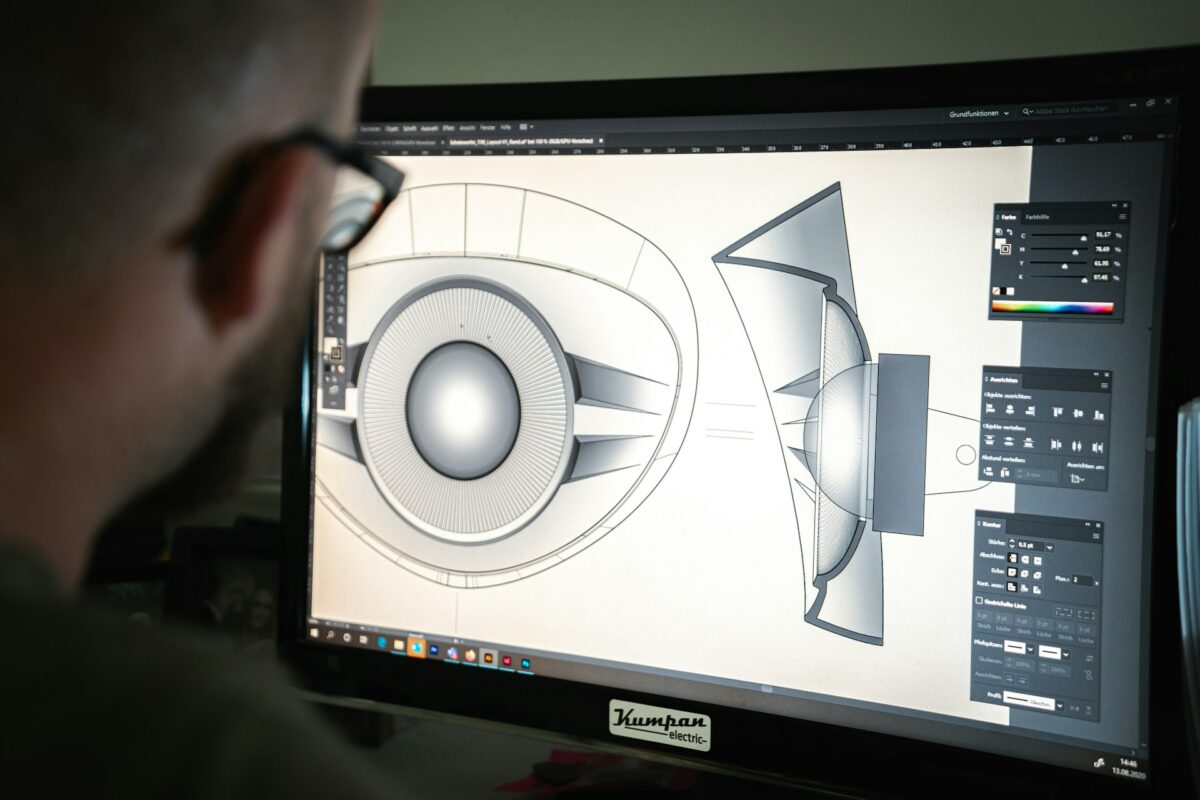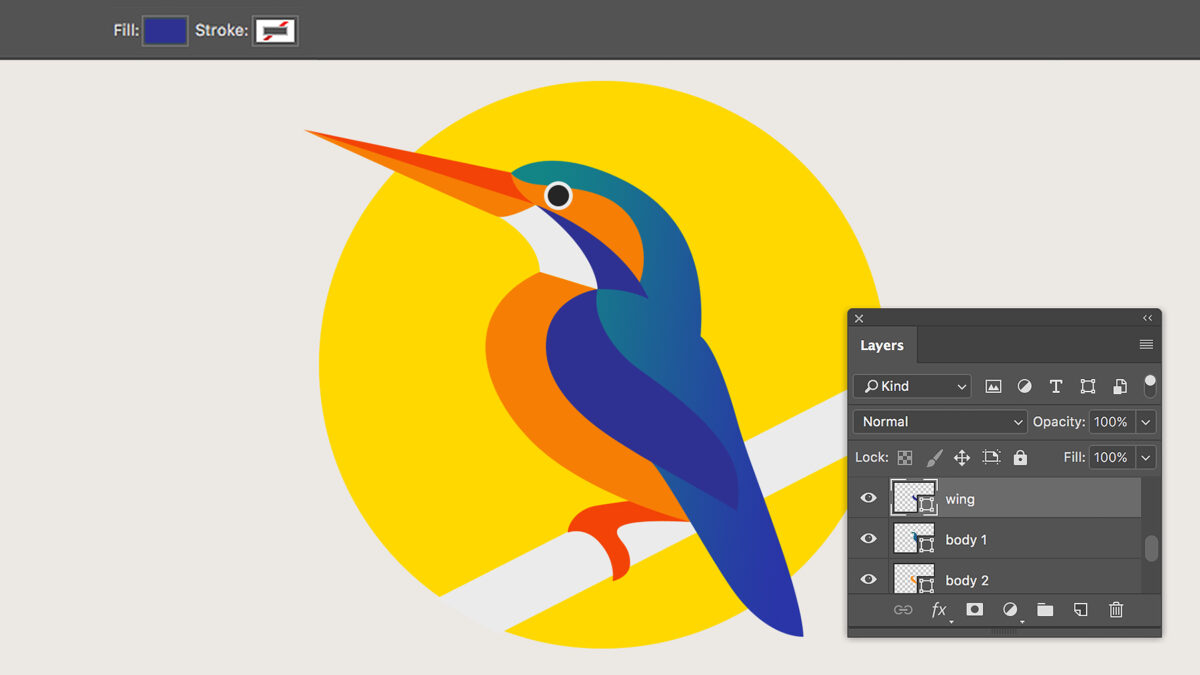A Comprehensive Guide to Achieving Mastery with Layer Masks
Of all the non-destructive tools available in the toolkit of any pixel editor, layer masks are the most significant. They allow you to conceal, reveal, blend, and refine portions of layers without permanently removing pixels, which means you can experiment freely, correct errors quickly, and create complex composites that remain completely editable. In this article, you will learn the fundamental principles of layer masking, as well as the methods that expert retouchers use. In addition, you will find practical exercises that will allow you to internalize the process.
Why it is important to stack masks
Grayscale values are used by a layer mask to manage the transparency of its layer, with white being used to disclose, black being used to hide, and gray shades being used to provide partial transparency. Since the mask is stored on the mask itself rather than on the pixels that it affects, you have the ability to switch it on and off, alter it, or delete it at any moment. This method makes iterative work far safer and quicker than deleting or permanently cutting pixels since it retains the original picture data.
Non-destructive editing explained: layer masks vs deleting
While masks simply conceal pixels, erasing them removes them entirely. When you delete anything, you limit your future possibilities. For instance, if you remove a small detail from your hair, there is no way for you to restore it two hours later. Masks make it possible to paint back details, feather edges, or reverse the selection in an instant. Regard masks as reversible “soft erasers” that you have the ability to shape via the use of gradients, selects, and brushes.
Step-by-step instructions on how to make and comprehend simple masks
Choose the layer that you want to conceal with a mask.
If you want to make a white mask that shows everything, you should click the “Add layer mask” option, which is often represented by a rectangle with a circle within it. Alternatively, you may choose “Hide All,” which will produce a black mask that hides everything.
By using Alt/Option and clicking on the mask thumbnail, you may examine the mask itself. If you want to return to the regular view, you can press Alt/Option and click on the thumbnail again.
You may load the mask as a selection by clicking the mask thumbnail while holding down the Ctrl or Cmd key. This is helpful when you are trying to refine the mask.
Make the mask active before pressing Ctrl/Cmd-I in order to invert it (white → black, black → white).
You may use these fundamentals to begin concealing and exposing sections of a layer while maintaining the integrity of the original.
Painting masks: brushes, opacity, and flow
The most straightforward and adaptable method of improving what is seen is to paint on a mask using black, white, and gray. This involves setting the foreground color to black in order to conceal, white in order to disclose, and mid-gray in order to achieve partial opacity. When you want a smooth transition, use the Brush tool (B) with soft edges; when you want sharp edges, use a hard brush. You can change the size of the brush with the [ and ] keys, and you can change the hardness of the brush with the Shift+[ or Shift+] keys. Opacity determines the overall strength of the paint, and flow governs how the paint builds up when you hold the brush over an area. Use a lower flow for masking that is slow and buildable. Don’t forget that you may return the colors to black and white by pressing the D key, and you can also switch them by using the X key.
masks that are based on selection and refining
Selections provide you with a quick and accurate beginning: make use of the marquee, lasso, or selection tools to create the first region. After that, you can transform that selection into a mask by clicking the Add Layer Mask button. In order to smooth, feather, shift the edge, and get rid of color fringing, utilize the “Select and Mask” (or Refine Edge) workspace for hair, foliage, or other soft edges. Output the result straight to a Layer Mask so that you may continue to modify it in the future. In order to isolate highlights, midtones, or shadows, and then generate a mask from that selection, you may try going to Select > Color Range. This is a good option for complicated tonal choices.
Characteristics of feathering, density, and masks
Masks contain characteristics that are unique to them. For example, feathering softens the border of the mask, resulting in a more gradual transition. Density decreases the overall opacity of the mask, which allows you to fade its impact without having to repaint it. Additionally, feathering and contrast may be used to sharpen a soft mask in a controlled manner. If you want to make rapid adjustments to the edge character of a mask, you may do so by changing these parameters in the Properties panel. When composites are being used, a little bit of feather frequently results in a more natural-looking composite than a flawlessly hard cut.
Utilizing masks that include adjustment layers and clipping masks
Because adjustment layers are usually accompanied with a mask by default, they are an excellent choice for local repairs. In order to conceal the adjustment from regions that need to stay unaltered, paint the adjustment mask black. Clipping masks are helpful for directing color grading or sharpening to a single topic without impacting the backdrop since they confine a layer or adjustment to the non-transparent pixels of the layer underneath. In order to make a clipping mask, you should position the adjustment layer above the target layer and then choose “Create Clipping Mask.” You also have the option of grouping layers together and then adding a group mask to effect everything within the group all at once.
Shape-based masking and vector masks
Vector masks are best suited for situations in which you want mathematically correct masks, logos, or clean forms, since they use paths rather than pixels to produce borders that are sharp and resolution-independent. If you want an edge that is precisely scalable, create a path with either the Pen tool or the Shape tool, and then transform that path into a vector mask. When you want both smooth, photographic transitions and exact edges, you may mix vector masks with pixel masks.
Luminosity masks and channel trickery are two examples of advanced approaches.
Using tonal values as selects, luminosity masks allow you to precisely target highlights, midtones, or shadows. To do so, open the Channels panel, Ctrl/Cmd-click the RGB thumbnail to load luminosity as a selection, and then apply a mask to the current layer. You may improve those choices by preserving channels, deleting or crossing them, and developing complex masks that react to tonal connections. This is a crucial skill for advanced dodging, burning, and selective contrast work.
Realistic composites need masking, which involves color matching, edges, and shadows.
A believable composite needs a decent cutout, but it also takes more than that: Apply adjustment layers that are clipped to subject layers in order to match the contrast and color temperature. Make use of mild feathering and decontamination treatments on the borders in order to eliminate halos. Reconstruct shadows that are missing by painting a soft, low-opacity black onto a new layer below the subject and then blurring it to your liking. In order to ensure that the texture and noise are consistent across the layers, the foreground element should be given a little amount of grain or noise, and a tiny blur should be applied to the edges wherever there are variances in depth of field.
Advice on how to improve workflow, shortcuts, and troubleshooting
Maintain the masks’ ability to be edited by waiting to use Apply Layer Mask until you are quite certain, since this action is irreversible.
By holding down Alt or Option while clicking and dragging the mask thumbnail to a different layer, you may create copies of the mask.
If you want to move the layer apart from the mask, you may do so by unlinking the mask from its layer. This can be accomplished by clicking on the chain symbol that is situated between the thumbnails.
By shift-clicking on the thumbnail of a mask, you may temporarily disable it. To re-enable the mask, do the same action again.
If a mask seems to be inverted, you may rectify it by using Ctrl/Cmd-I.
In order to neutralize edges, paint with sampled backdrop colors at a low opacity or make use of Select and Mask → Decontaminate Colors if you see any fringes or color contamination.
If the paint shows on the picture instead of the mask, you will need to ensure that the mask thumbnail is now active. You will know it is active when it has a frame around it.
These little habits help to expedite your productivity while also preventing typical mistakes from occurring.
Exercises for practice to develop mastery
Sky Replacement: Utilize the Select and Mask tool to choose the sky, then create a mask. After that, put a new sky layer underneath the existing layer, and then combine the two with a feathered gradient mask that spans the horizon. Complete the process by harmonizing the color and light with clipped Curves and a little vignette.
Portrait hair refinement: Begin by making a preliminary selection of the subject, then use Select and Mask to refine the hair and make a mask. After that, build a new layer beneath the subject and paint a soft shadow on it, and then match the backdrop texture with noise.
Local dodge and burn: produce a fifty percent gray layer that is set to Overlay, then create a layer mask and use a soft black brush at a low opacity to paint on the mask; this will show luminous dodging and burning that has been painted directly on the gray layer.
Every single workout is geared toward a practical end and assists you in combining choices, painting, and alterations into a genuine product.
In conclusion, the most important aspect of the process of making a decision is the ability to gather and evaluate information.
The cornerstone of professional and versatile picture editing is the use of layer masks. Layer masks enable you to make decisions that can be reversed, combine selections and painting, and generate composite images that can be tweaked for an infinite amount of time. Deliberate practice is the key to achieving proficiency. Begin with the fundamentals, which include creating, painting, and inverting, and then go on to investigating selection refinement tools. Once you are comfortable with them, you may begin to use luminosity masks, group masks, and combined vector/pixel processes. If you embrace the non-destructive approach and master the few shortcuts that can speed up your work, you will discover that layer masking will rapidly become second nature to you. Layer masking is the one skill that most substantially enhances the quality and dependability of your changes.


